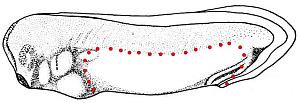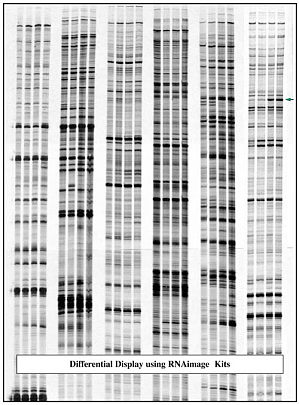IntroductionPost-translational modifications (PTMs) of histones specify regulatory functions on chromatin through the recruitment of downstream effectors or “readers” that can specifically recognize d ...
IntroductionThe polytene chromosomes found in the salivary glands of Drosophila larvae (and other diptera) provide a valuable model system in which microscopical techniques can be used to study the fu ...
IntroductionThe dynamics of chromatin structure is becoming an area of increasing interest. Both thermal energy and ATP-dependent chromatin remodelling enzymes can alter nucleosome structure and posit ...
IntroductionThe visualisation of specific DNA sequences in living cells achieved through the integration of lac operator arrays (lacop) and expression of a GFP-lac repressor fusion has provided new to ...
IntroductionThe visualisation of specific DNA sequences in living cells achieved through the integration of lac operator arrays (lacop) and expression of a GFP-lac repressor fusion has provided new to ...
This protocol was provided to us from the Grainger lab and modified by M. Khokha to include the lead brick for better squashing.1. Place 10 Nieuwkoop & Faber Stage 26-34 tadpoles into a dish of deioni ...
This protocol was provided to us from the Grainger lab and modified by M. Khokha to include the lead brick for better squashing.1. Place 10 Nieuwkoop & Faber Stage 26-34 tadpoles into a dish of deioni ...
We have been karyotyping animals in the Grainger lab to confirm that the stocks maintained in the lab are indeed X. tropicalis and to establish that wild-caught animals being used for gynogenesis are ...
Materials Fresh venous blood 8Heparinized syringesEagle's spinner modified media with PHACulture flasksTissue culture grade incubator at 37° C10 µ g/ml ColcemidClinical centrifuge and tubes0.075 M KCl ...
DAY 1PREATMENT01. ___ Mark slides02. ___ 2XSSC 37°C for 30 min (Age slide if necessary)03. ___ 12ul pepsin/40ml 0.01N HCl 37°C for 5 min (Adjust for different conditions)04. ___ 1X PBS 5 min05. ___ 1X ...
All living organisms have thousands to tens of thousands of unique genes encoded in their genome of which only a small fraction perhaps 15% are expressed in any individual cell. Therefore it is the te ...
DNA is dissolved in Hepes buffer (10 mM pH 7.0) at a final concentration of 20mg/ml. Cationic polymers are dissolved in pure water (2.5 mg/ml). An appropriate volume of cationic polymer solution is ad ...
Place 20 mg/ml of DNA (Calf thymus or plasmid) in a polymethacrylate fluorimeter cuvette containing 2 mls of water with 400 ng of ethidium bromide / ml. Place the cuvette was placed in either the Kont ...
Complexes can be isolated from serum by centrifugation on either a sucrose or Percoll gradient. The sucrose gradient is the easier of the two to set up.Sucrose gradient:Place 5 ml of 50% sucrose in ...
Make complexes according to standard protocol Add the nuclease and any co-factors that are required to the complexes. A few units of nuclease should be enough. DNase I micrococcal nuclease and mung be ...
PHK points to bear in mind PHKs must be actively dividing to be successfully infectedPHKs must never become confluent because they become difficult to trypsinize (e.g. even if you do force them all of ...
This method works well for 17.5 day mouse embryos.All stains should be made up fresh.Fix embryos in 90% ethanol for at least 1 week longer if possible. Prior to staining remove skin and viscera partic ...
The number of infertile couples has increased in recent years and is now estimated at 15�20% of all couples worldwide. Since its introduction into reproductive medicine in 1978 in vitro fertilization ...
Sending Sera to Testing for Mouse Pathogens.Bleed mice: Obtain 300-400µl from mice of various ages (older mice that have been in the room for an extended period) and strains (include nude mice if in t ...
Given each mouse 0.05 ml PMSG (Straight from vial) administered i/p at 12 o'clock midday46 - 48 HOURS LATER (i.e. 10am - 12noon two days later)Dilute 0.5ml hCG (in vial) in 2ml PBSOf this mixture give ...







